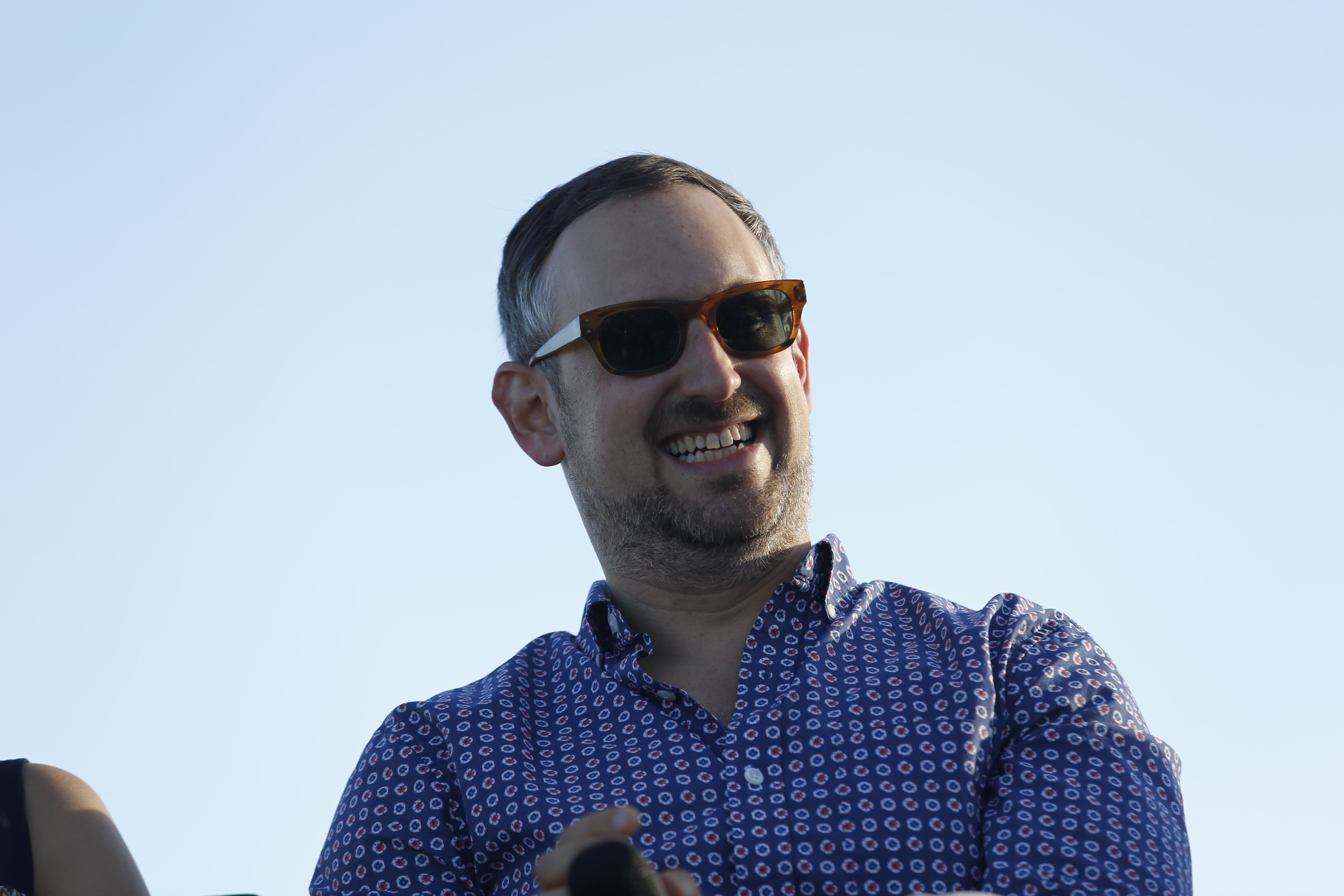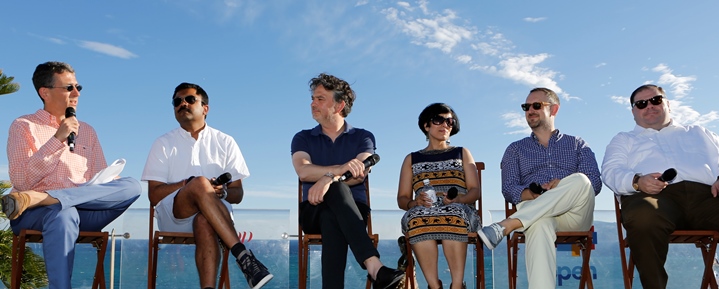Q&A: Digitas on Automation, Programmatic and TV

Jay Sears, Senior Vice President Marketplace Development of Rubicon Project discusses "Automation, Programmatic and TV" with Adam Shlachter of Digitas (pictured above). The two executives recently appeared at Rubicon Project's 3rd Annual Automated Advertising Panel at Cannes.

(In the photo above, Jay Sears of Rubicon Project, Arun Kumar of IPG's Cadreon, Stephan Beringer of Publicis' VivaKi, Ashwini Karandikar of Dentsu Aegis Network's Amnet, Adam Shlachter of Digitas and Lou Paskalis of Bank of America discuss ad automation issues of the day in Cannes, France.)
Your Name:Adam Shlachter
Your Company:DigitasLBi
Your Title:Chief Investment Officer
SEARS: What do you read to keep up with politics, art and culture?
SHLACHTER: Twitter and other social platforms are key to discovery, but some of the big ones are The New York Times, The Wall Street Journal, The Atlantic, Medium, The Economist, Wired, Vox, The Onion, Gothamist, The Washington Post and The New Yorker. And in print, New York Magazine and The Week!
SEARS: What do you read to keep up with friends?
SHLACHTER: Facebook. And if Instagram counts, that too.
SEARS: What do you read to keep up with our industry?
SHLACHTER: re/code, Business Insider, AdWeek, AdAge, Ad Exchanger, Wall Street Journal, The New York Times, HBR and Fast Company, amongst others.
SEARS: What's your favorite commercial of all time?
SHLACHTER: The easy answer is the Coke "Hilltop" ad, because it's so iconic, and because of "Mad Men." But I go more for humor over everything, and a few years back there was a BK ad that had me cracking up. On the other hand, I've seen a ton of great spots from Europe and Asia, but I don't remember any of them specifically.
SEARS: With regards to advertising automation and programmatic, what are Digitas' three biggest company-wide initiatives in 2015?
SHLACHTER:
- Training: Everyone needs to speak this language. It's not just a specialty skill, and it transcends every discipline and capability.
- Standardization: Workflow, processes and metrics need to be overhauled, better connected across the board.
- Creative: Data plays a key role in the stories and messages we can create, along with how, where, why and to whom we share them with.
SEARS: On average company-wide (globally), out of each $1.00 spent on media (all media, not just digital) by one of your advertisers, how much today (in 2015) is spent on automated or programmatic channels?
SHLACHTER: Between $.02 and $.30, depending on the advertiser, category and metric. Many of our DR focused advertisers are further along, but also very specific in their approach.
SEARS: What will this number be in 2017?
SHLACHTER: $.10 to $.50
SEARS: Tell us about the global advertising operations of Digitas.
SHLACHTER: We fuse creativity, data and technology to help our clients transform. Through that we tell great brand stories to create connections with consumers and ultimately change peoples' behavior through the actions they take.
SEARS: How many employees are there in your organization?
SHLACHTER: 7,000 in 40 offices, across 26 countries.
SEARS: Draw an analogy between the automation of television and a European football game. Are we in the pre-game? Still driving to the stadium?
SHLACHTER:We are still on the practice field, figuring out what plays to run, because none are perfect or going to work every time, in every situation. They still need to be tested and refined.
SEARS: How can advertising automation help the strategy and planning functions (directly or indirectly) at an advertising agency?
SHLACHTER: The data and insights we can extract through advertising automation can be hugely beneficial to realizing true 1:1 marketing at scale, going well beyond re-targeting and experimentation.
SEARS: Can linear TV be automated, yes or no?
SHLACHTER: Yes, but it will come in phases, like it did with digital. The biggest thing missing is an operating standard to trade and target off of. Right now there are too many competing and lack of common standards.
SEARS: What two or three events or happenings will accelerate the automation of television?
SHLACHTER:
- TV Everywhere, which is really TV content becoming digitally distributed and consumed.
- The acceleration of Telco, MSO and AdTech mergers, which brings together more data.
- The increase in demand for more individual level data vs. segments, samples and proxies.
SEARS: Transparency -- on media costs, on data, on inventory -- has become a lightning rod issue. Should transparency be a negotiated benefit for the advertiser client, yes or no?
SHLACHTER: It shouldn't have to be negotiated. Advertisers should have transparency and control with regards to their investments. There are costs for different services, platforms and technology, but there should be clarity for each.
SEARS: Which of the following will accelerate the automation of site direct (direct orders) budget? Pick all that apply:
- Dynamic access to all publisher inventory [vs. just "remnant" or "auction"]
- Ability to leverage publisher first party data
- Ability to leverage advertiser first party data [against all publisher inventory, especially premium]
- Availability of rich media, expandable units and larger IAB Rising Star formats
- Ability to more easily curate audiences for specific advertisers across the premium content of multiple publishers
- All of the above
SHLACHTER: It's a combination of all of the above, to a greater degree and variety; E is of particular importance.
SEARS: If you could go to the airport right now with friends or family and fly anywhere in the world for vacation, who would you take and where would you go?
SHLACHTER: I would take my family across Asia, for a month or two. Or more. My wife lived in Japan when she was younger, but I've never been and find all the different cultures fascinating. And the food …
SEARS: If you could create an endowment to fund any existing non-profit you designated, what lucky non-profit organization would that be?
SHLACHTER: I don't think there is any one. But if I had to focus, we should cure cancer and Alzheimer's and improve education for children.
SEARS: What is your favorite restaurant in the world?
SHLACHTER: There are still too many I haven't been to. But there was a small place outside of Sienna my wife and I once ate in, run by an older couple who had been there forever. They didn't speak much English, but we figured it out … and it was perfect.
SEARS: Thanks, Adam!
The opinions and points of view expressed in this commentary are exclusively the views of the author and do not necessarily represent the views of MediaVillage.com management or associated bloggers.


